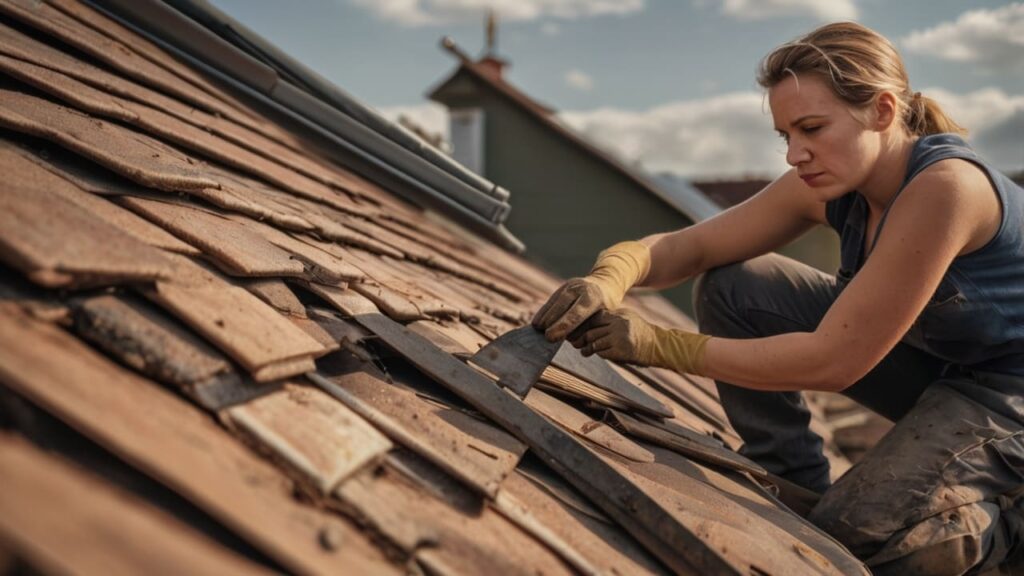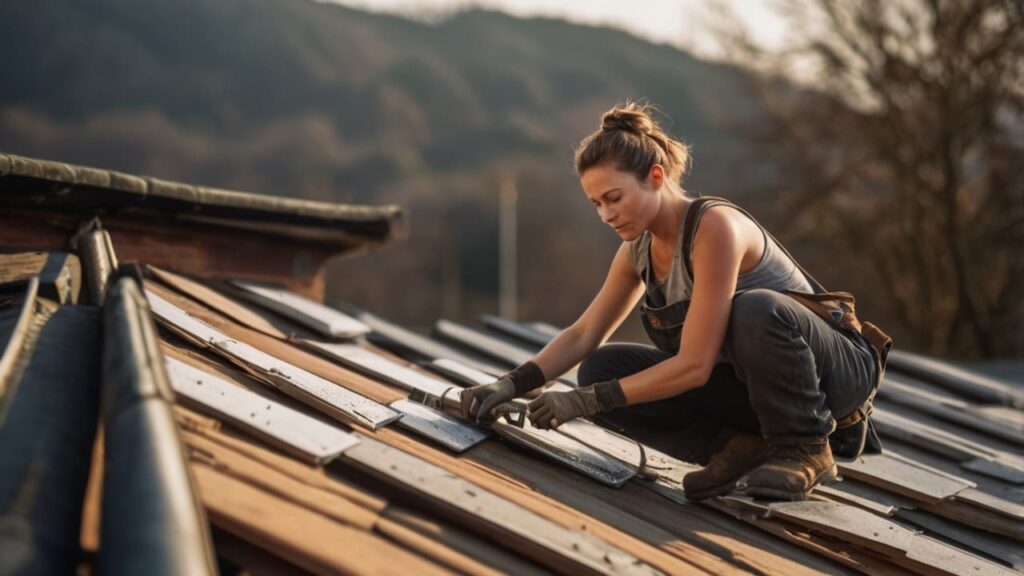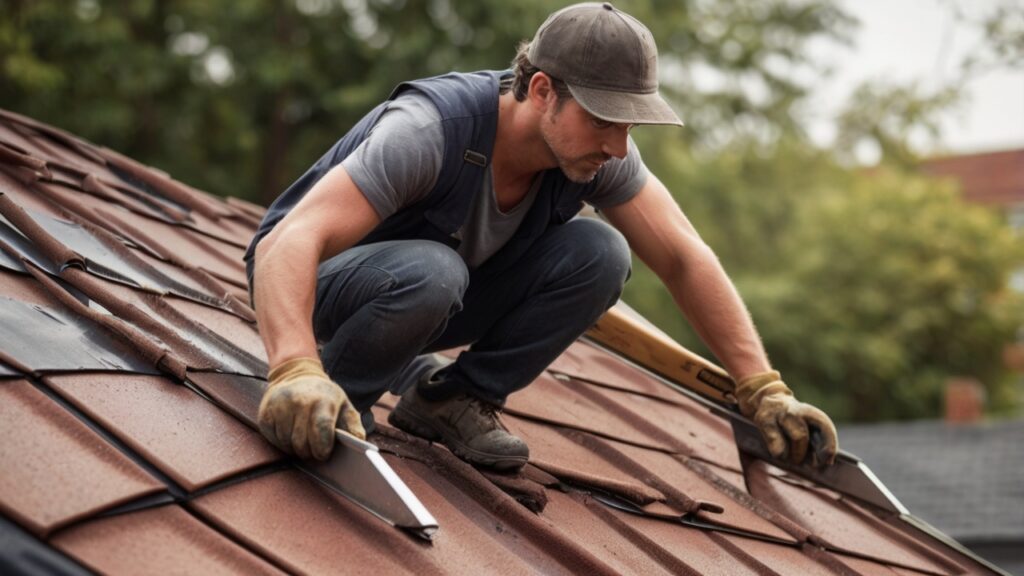The dream of every homeowner is to have a strong, beautiful roof that doesn’t demand endless repairs and cleanings. Choosing low-maintenance roofing is more than just a matter of convenience—it’s about peace of mind. Roofs are expensive, and nobody wants to spend every season worrying about leaks, loose shingles, or constant upkeep. The right decision upfront means fewer repairs, longer durability, and a home that looks sharp for decades.
Some homeowners in North Carolina often ask me, “How do I balance between long-lasting roof materials and cost?” The truth is, there’s no single answer, but there are tried-and-true maintenance-free roofing options that consistently deliver. It’s not just about saving money but also about avoiding headaches. I still remember my uncle’s old asphalt roof—it looked fine at first but required patchwork almost every two years. Compare that with my neighbor’s metal roof that’s lasted 25 years with little more than a rinse after storms.
That’s why roofing isn’t just about material; it’s about lifestyle. If you’re someone who wants reliability, choosing the best low maintenance roofing types can mean decades of protection with minimal stress.
Why Low-Maintenance Roofing Matters
A roof isn’t something we replace often. A good one lasts anywhere from 20 to 100 years, depending on what you choose. The catch? Some materials need babysitting. Others? Practically bulletproof.
Here’s what you risk with high-maintenance materials:
- Cracks forming faster than expected due to thermal shifts.
- Leaks creeping into attic insulation, causing mold growth.
- Flashing pulling away from chimneys during storms.
- Ongoing repair costs that feel like a leaking wallet.
By choosing long-lasting roof materials, you essentially “pay once, cry once.” Yes, the upfront cost might pinch, but the decades of quiet savings and durability are worth it.
According to James Pritchard, a roofing expert with 30 years in the field, “The cost of labor and repairs adds up much faster than most homeowners expect. A metal or slate roof is not just a purchase—it’s insurance against those endless repair calls.”
Types of Low-Maintenance Roofing
Now let’s break down the trusted, maintenance-free roofing options that professionals swear by.
1. Metal Roofing
Metal roofs have exploded in popularity for good reason. They require very little maintenance beyond occasional debris clearing. Most come with protective coatings that resist rust and fading.
Pros:
- Lifespan of 40–70 years.
- Resistant to fire, wind, and hail.
- Minimal cleaning needed.
Cons:
- Higher upfront cost.
- Can be noisy during heavy rain unless insulated properly.
Still, metal roofing maintenance is about as simple as it gets—no replacing shingles every storm season.
2. Slate Roofing
Slate is the aristocrat of roofs. It’s gorgeous, naturally water-resistant, and can last over a century.
Pros:
- Classic aesthetic appeal.
- Incredibly durable and fireproof.
- Almost zero maintenance besides checking flashing.
Cons:
- Heavy—needs reinforced framing.
- Expensive to install.
The beauty is, once installed, you won’t be patching or sealing it every few years. Compared to slate vs. tile roofing upkeep, slate wins hands down for longevity.
3. Clay or Concrete Tiles
Tiles are especially popular in warmer climates. They resist rot, insects, and can handle decades of heat without breaking down.
Pros:
- 50+ year lifespan.
- Low maintenance, just occasional inspection for cracked tiles.
- Energy-efficient by keeping homes cooler.
Cons:
- Can break under heavy impact.
- Heavy weight like slate.
Most tile repairs involve replacing individual pieces rather than entire sections, keeping upkeep costs low.
4. Synthetic Roofing Materials
Modern synthetic shingles replicate the look of wood or slate but are made of polymer blends. They’re lightweight and engineered for minimal upkeep.
Pros:
- Affordable alternative to slate.
- Resistant to cracking, splitting, and insects.
- Easier installation and lighter than natural stone.
Cons:
- Not as long-lived as natural slate.
- Some brands vary in quality.
Synthetic options are becoming the go-to choice for homeowners who want style without the constant maintenance.
Case Study: A Reliable Choice in Action
A Raleigh homeowner replaced their old asphalt shingles with a standing seam metal roof in 2015. Since then, aside from one gutter cleaning and a small vent repair, they’ve had zero issues. Their neighbor across the street stuck with asphalt and has already paid for two major patch jobs and one leak repair. The homeowner told me, “I was skeptical about the cost at first, but not worrying every storm season has been worth every penny.”
This is why the benefits of low-maintenance roofs go beyond numbers—it’s about confidence in your investment.
How Climate Affects Roofing Maintenance
It’s not just about material, but also about climate. For instance, North Carolina roofing upkeep often comes with challenges like humidity, hurricanes, and sudden cold snaps. That’s why homeowners here benefit most from metal or tile options.
This ties back to another factor often overlooked: installation conditions. You might recall the discussion in our other guide about the best temperature for roof installation, where working in extreme hot or cold directly affects how materials settle. That same principle applies here—materials that can withstand climate changes with minimal fuss become the true champions of low-maintenance living.

Future Roofing Insights Homeowners Will Appreciate
While we’re focusing on types of low slope roofing systems and other minimal-upkeep options today, it’s also smart to look at related topics that expand your knowledge:
- Exploring which materials answer the question of “what is the most affordable roofing choice” without compromising too much on longevity.
- Breaking down engineering details from studies on “the strongest roof design” (check this in-depth article to see why shape and structure matter as much as material).
- Comparing coatings and sealants that can turn even mid-range roofs into nearly maintenance-free roofing options.
- Investigating innovative eco-roof systems that use recycled materials while keeping upkeep low.
These aren’t just side notes—they’re natural extensions of how homeowners can make smarter roofing decisions without drowning in endless repair costs.
Repair Processes and Tools Worth Knowing
Even the best low-maintenance roofing sometimes needs small fixes. Professionals typically use:
- Sealant tapes for quick weatherproofing around vents.
- Flashing kits for chimney or skylight edges.
- Non-abrasive brushes for cleaning moss without damaging tiles.
These little tools prevent small issues from snowballing. A trusted roofing contractor will always explain the repair process openly, so you know what’s being done and why.
FAQs
Q1: What are the longest-lasting roof materials with minimal upkeep?
Slate and metal top the list, often lasting 50–100 years with only occasional inspections.
Q2: Are there truly maintenance-free roofing options?
Not 100%. Every roof needs at least inspections, but some require far less than others. Metal and synthetic roofs come close to “worry-free.”
Q3: How do climate and slope affect maintenance needs?
Hot, humid areas benefit from tile or metal. Low slope systems may need more drainage care, while steep slopes shed debris naturally.
Low-maintenance roofing isn’t about laziness—it’s about investing wisely. Choosing long-lasting roof materials like slate, metal, or tile means reducing headaches and ensuring that your home is safe, reliable, and beautiful for decades. And let’s be honest, nobody wants to climb up a ladder every season just to replace a loose shingle.
Homeowners who explore these maintenance-free roofing options quickly realize that peace of mind is worth every dollar. Whether you’re planning a new build or replacing an old roof, talk to a professional roofing expert about which type matches your climate, budget, and lifestyle.
And if this article gave you clarity, don’t keep it to yourself—share it on your social media using the buttons below. Someone else out there is probably tired of constant roof repairs and needs this advice too.



